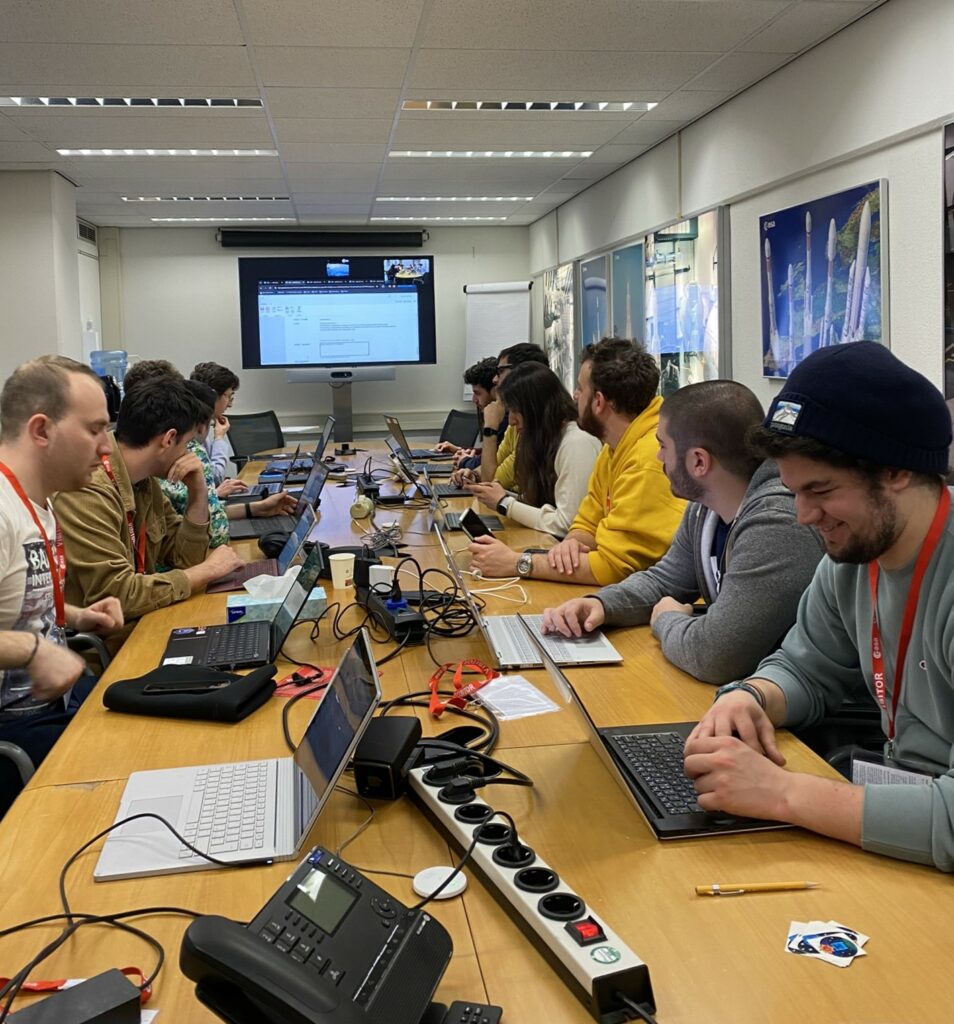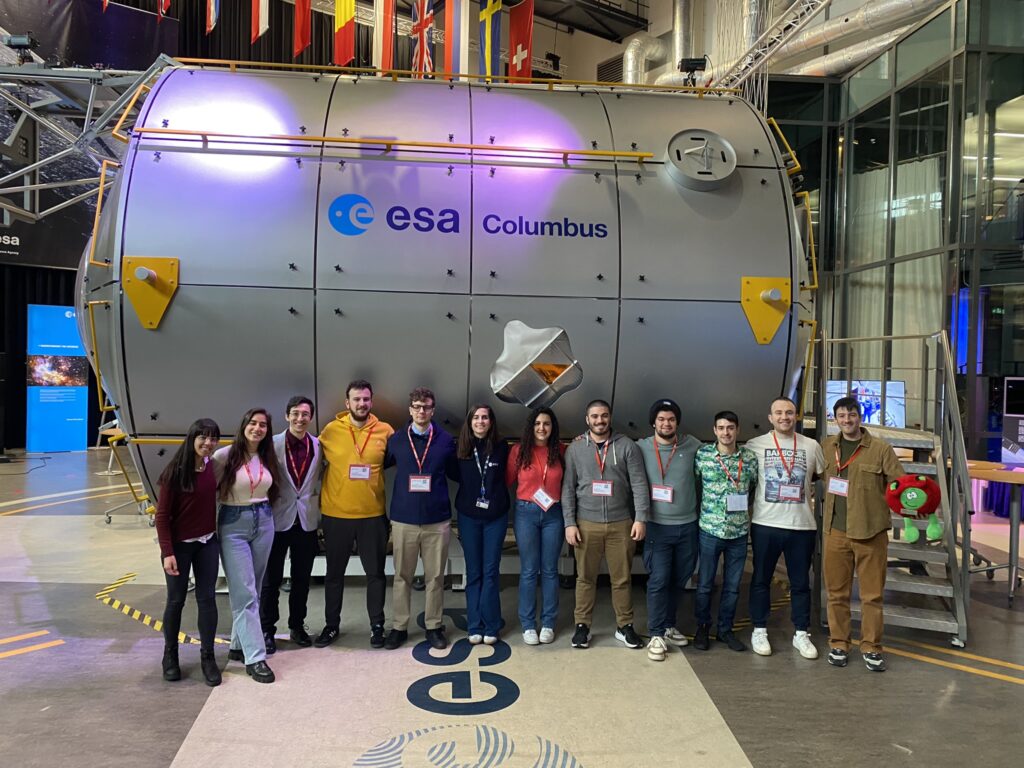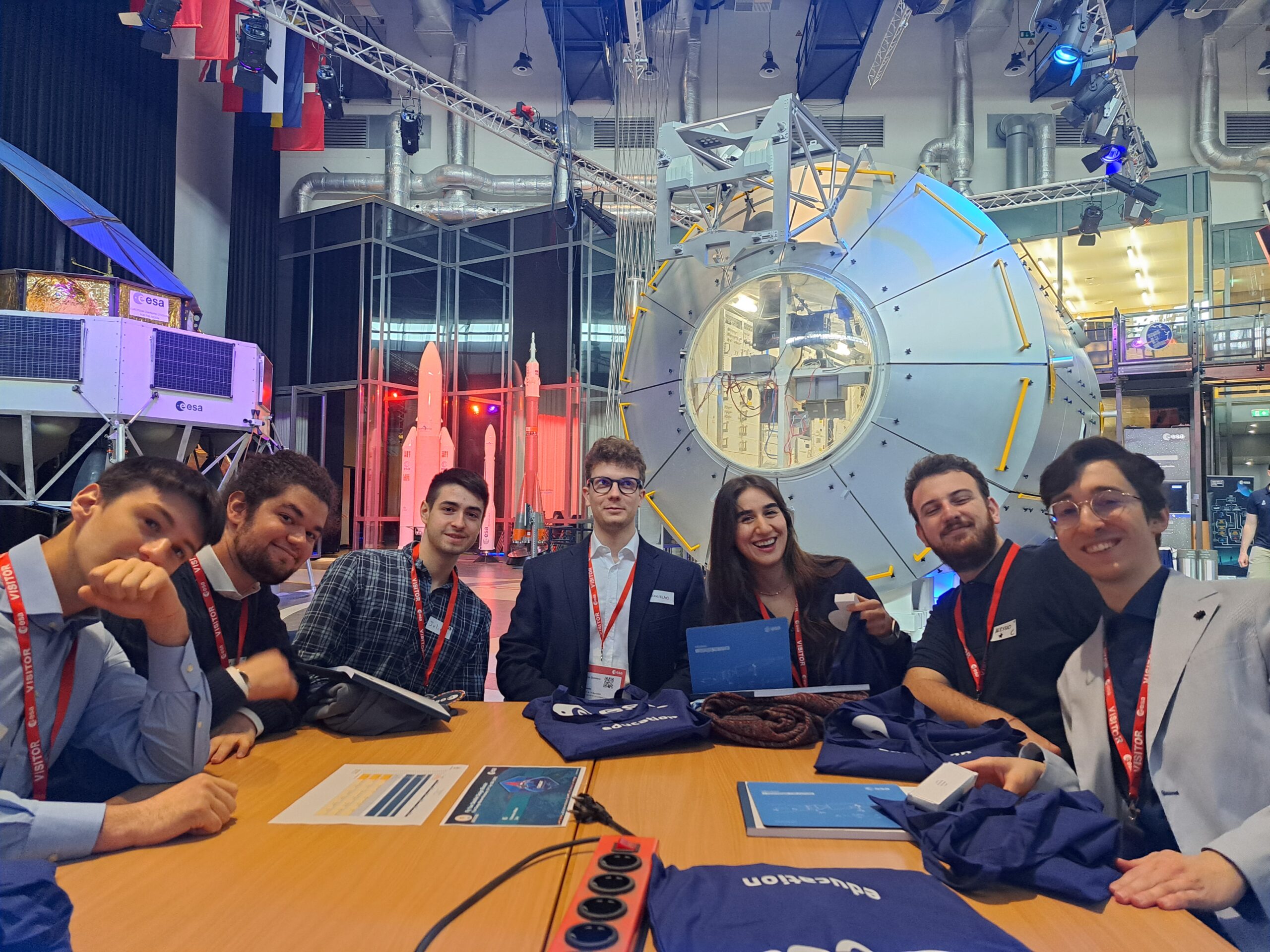Lately we only hear great news from 6S CubeSat! For the less up to date, 6S CubeSat is one of the two permanent projects of PoliSpace. It’s the oldest one, and our members have been working on it since February 2021. The aim of the project is to develop the first satellite entirely designed and built by students of the Politecnico of Milano.
This is going to happen through some phases to satisfy the mission objectives. After launching the satellite and having its orbit stabilized (this phase is called LEOP) some environment’s measurements are going to take place. This of course means that through each step some performance criteria need to be satisfied, so both the battery, the structure, the thermic system (developed by using solar panels) and everything else needs to be fully functional and able to work harmoniously together.
What have the project developers been doing lately?
It’s not easy to answer this question because they have been doing so much!
Not only the members of 6S CubeSat are developing this satellite, while studying for their university courses, but they are also following the ESA Fly Your Satellite! Design Booster Pilot Program, an eighteen-month long program sponsored by ESA.
The project manager of 6S CubeSat, Suhailah Alkhawashke, described it as: “Made of two main milestones: The Baseline Design Review and the Final Design Review”. While the BDR was completed online the FDR was planned to be done in presence, with ESA accommodating six different teams (made by 8 students each) in their ESTEC (European Space Research and Technology Centre) facility, Netherlands. The eight members chosen from 6S CubeSat have been the team leaders of every department, to absorb more design suggestions in every different field and to be more productive “not only with the ESA experts, but also in internal cross-subsystem discussion”, according to Alkhawashke.

The program was useful to improve design skills as well as soft skills and to strengthen bonds within the group, which was just as important as serious talks about the CubeSat. Indeed, a synchronized group can surely work better as a well-oiled machine, improving functionality, which the team gained by covering all the comments raised by the experts through the BDR phase. Defining some issues and getting on the right path for others was the priority for the 6S CubeSat members as they progressed towards the ultimate achievement of a final design.
But how is organized a normal day at ESTEC?
While following their ESA schedule, all teams had different meetings with experts to receive feedback and treasure news suggestions, and to improve their global vision of the project. “We realized immediately that we have to take advantage of having access to the knowledge of the experts, and so we also tried to talk to them during the breaks or lunch time” said Alkhawashke. As you can see, our team was giving a hundred percent of their effort in the FDR activities, and spent also their time after work to get ready for the next day, in order to be participative and productive.
Harmony was a feature of ESTEC’s days both between the members of the 6S’ Cubesat and between the other teams. The project manager said: “The set up of the FDR (where all teams were in one big hall with different tables) also allowed us to get to know the other teams better, which was actually quite useful, as you get to share experiences and learn from each other’s mistakes and achievements”.

Being so close to the industry world was a huge achievement for the teams. The meetings were focused, and both the engineers and the experts were able to really go in depth into the design comments, which gave to the team an idea of how big projects could be managed through the ESA team. Even when the discussions were not able to solve outstanding issues and to improve the design (some troubles can be physiological) the ESA’s experts assured the 6S team that other meetings could be arranged. Additionally, these experts reassured the team of their amazing work, which gave of course a huge boost to every subsystem leader, even if the design was still not finalized for them
Alkhawashke said: “It was truly a priceless experience to have experts from ESA share their advice, comments, and best practices with us as students; it’s the kind of knowledge you can’t get from books or online, but only from people who have direct practical experiences on some of the coolest international missions.”
ESTEC was a great opportunity for the PoliSpace’s team to carry out a mission according to industrial standards. They were able to schedule the project within industrial parameters, considering the probable out-of-control reasons of delays and giving the right deadline to every step.
From a project manager point of view, the improvement was consistent. But even on a technical one the ESA opportunity was amazing. From the point of view of Luca Mazzotti, team leader of STR (structure), the ESA Experts have the uncommon ability to listen to your technical issues and propose a possible solution shortly after. By interacting in person, they were able to expose the team leaders to a critical review of their work, which led to ideas and improvements. Mazzotti affirmed: “Throughout the FYS Program, our team received valuable insights on improving our analytical model and solving related problems” So even on technical issues, this ESTEC full immersion gave a great impulse to the 6S CubeSat project, boosting the enthusiasm of members and leaders.

To conclude, this experience was not just a big achievement for the 6S CubeSat team, but also for PoliSpace and Politecnico of Milano. The eight team leaders selected had the opportunity to talk face to face to the coolest and most esteemed experts in the Space field an to bond with them, creating solid connections. This kind of program is the real nourishment of our space passion, and the 6S CubeSat team knows that well, since they came back with more energy and strength than before. Stay tuned because we are surely going to hear from them very soon.





